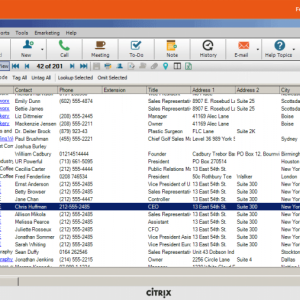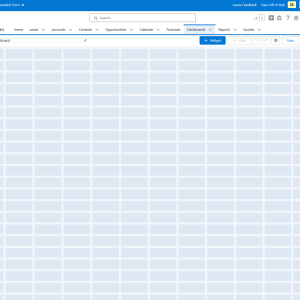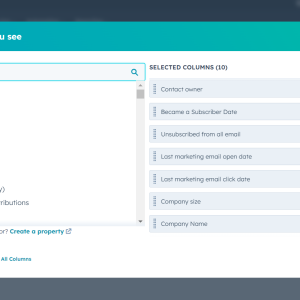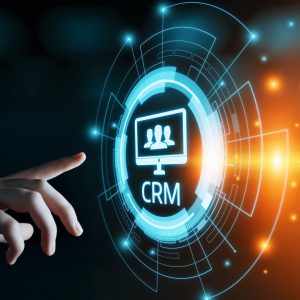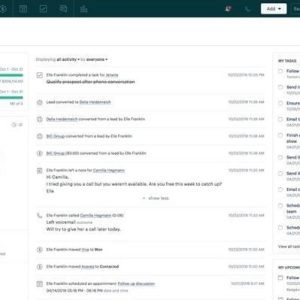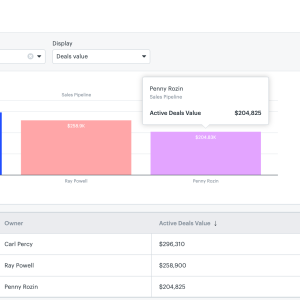Building and improving a sales pipeline is essential for any business looking to grow and succeed. A well-managed sales pipeline can help you identify potential customers, track their progress through the sales process, and ultimately close deals more efficiently. In this article, we will explore the key steps in building and improving your sales pipeline, including identifying your target market, generating leads, nurturing those leads, and measuring your pipeline’s effectiveness. Whether you are just starting out or looking to optimize your existing sales process, this guide will provide you with the tools and strategies to build and improve your sales pipeline.
Businesses rely on sales to keep the wheels turning. This is exactly why sale pipelines are so important. By visually displaying every core stage of customers’ journey – from prospecting to purchase – they help businesses track leads and convert them into sales with ease.
You are viewing: How to Build and Improve Your Sales Pipeline
In fact, when used alongside targeted customer relationship management (CRM) software, sales pipelines can be one of the most effective ways to maximize growth.
If your business is looking to improve its sales pipeline, it’s never too late to boost the performance of its existing channel or build a new one entirely. From identifying your target audience to reviewing your metrics, this article will show you how to do just that – in six easy-to-follow steps.
Read on if you’re interested in understanding your target audience, chasing up valuable leads, and avoiding some common sales pipeline pitfalls. Alternatively, skip to specific steps using the table of contents below.
What is a Sales Pipeline?
Put simply, a sales pipeline is a visual tool that displays which stage of the journey prospects are in their buying process. Its commonly displayed as a horizontal or vertical bar, and it’s divided up into multiple different steps.
While every sales pipeline will look slightly different, they typically include the six distinct stages below:
- Lead generation – The process where you attract prospects to your business
- Lead qualification – Where you assess the lead’s potential to convert
- Making a proposal – Offering your lead an offer
- Negotiation – If your lead doesn’t accept your proposal, you might negotiate a deal
- Closing or losing the deal – If your lead accepts your offer, its time to close the deal
- Post-purchase – Making sure your customer is happy with the product or service
Why do businesses use sales pipelines?
Sales pipelines can be a powerful tool to have in your business’s arsenal. When working effectively, the method has the power to help you:
- Gather more leads
- Make sales forecasting more accurate
- Improve the sales process
- Help you to understand your leads more holistically
- Help you to review and strengthen your performance
Sales Pipelines and Sales Funnels – What’s The Difference?
In marketing and sales, the terms sale pipeline and sales funnel often get mixed up, and sometimes they are even used interchangeably. However, while they both use data to display consumer journeys, the two processes actually differ in a number of core ways.
Their biggest difference comes from how they view the buying process. A sales pipeline looks at the sale process internally and focuses more on what the business can do to push the prospect along the channel. A sales funnel, on the other hand, is more customer-orientated and looks at the customer journey from the perspective of the lead.
Sales funnels also contain the stages a lead makes before becoming a customer, including the awareness, discovery, and intent phase. Since traditional sales pipelines don’t track a customer’s origin story or measure their subsequent conversion rates, these tools can be powerful when they’re used together.
How to Build a Sales Pipeline
So now we’ve ironed out the terms, how do you build a pipeline that actually works? Follow these six steps below to find out.
Step 1: Identify your audience
Most businesses think they have a pretty good grasp of their customer base – but do they really?
Understanding who your audience is is the most important prerequisite to finding quality leads. What are their demographics? What are their pain points? Why might your product or service appeal to them? These are all key questions to consider when identifying your business’s audience.
Even if your business appeals to a large number of individuals, it’s likely that there will share some unifying characteristics. By identifying these characteristics and targeting prospects more accurately, you can avoid the time and cost-intensive burden of mass marketing.
When it comes to researching your audience, there are a number of different ways you can go about it. You could use insights from social media platforms like Facebook, LinkedIn, and Instagram to see which users engage with your brand, use savvy marketing tools like Google Analytics, or even gather information through customer surveys.
See more : HubSpot vs Salesforce (2023) – Which CRM Is Best and Why?
Alternatively, if your business already relies on a CRM platform, you could use the treasure trove of information it offers to gain insights into your wider target audience.
Step 2: Create customer personas

There is no use collecting valuable customer data if you’re not going to put it to good use. So, no matter where you’ve decided to glean your information from, once you’ve identified your business’s audience – it’s time to create customer personas.
Also referred to as ‘buyer personas’, customer personas are semi-fictional profiles that represent your brand’s typical customers. The profiles give a name, face, and story to the main segments of your audience, and are designed to make it easier for you to understand their specific needs and connect with them emotionally.
Customer personas will look different for each business. For instance, if you run a florist and a core portion of your audience is middle-aged men who buy flowers sporadically, one of your customer profiles could be a married, 45-year-old man called Simon, who works in finance and regularly opts for the gift wrapping service. Alternatively, if you run a coffee shop with a young consumer base, one of your personas could be a Ph.D. student called Katie who seeks a quiet place to study and read on weekdays.
By creating around 4 of these curated profiles, and addressing important questions like why they are engaging with your brand, how they found you and how often they’re likely to return – they can help you to inform the next stages in the sales pipeline.
Step 3: Find leads – and revise them regularly
By this stage, you should have a pretty confident understanding of your customers, their demographics, desires, motivations, and pain points. So, now you know your audience, it’s time to start finding new leads.
When reaching out to prospective customers, use their names when possible. This is a great way to improve the quality of leads generated.
Lead generation is a powerful way to attract potential customers to your business. If you’re interested in finding leads and maximizing sales, there are multiple different avenues you can go down. We list a few of the core strategies below.
- Offer freebies – Offering free incentives is an excellent way to get prospective customers to engage with your brand. What’s more, by asking for an email address, it’s easier to follow up with the lead further down the line.
- Create compelling content – Research has shown that content marketing can generate up to three times as many leads as more traditional methods. It’s usually less expensive too, so what’s not to love? There are countless different types of content creation, but blog posts, videos, and podcasts are some of the most well-trodden.
- Reach out through social media – If individuals are following you on your social media platforms, chances are they’re already interested in your business. By using these channels effectively, you’re more likely to turn this interest into something more tangible.
- Offer personalization – When reaching out to prospective customers, use their names when possible. This is a great way to improve the quality of leads generated. And don’t just take our word for it – 60% of marketers agree.
- Use chatbots – If you run an online store, chatbots are an effective way to improve lead drop-off rates. They also make the process much more interactive for the web user, while being less disruptive than pop-ups.
- Host an event – Finding leads doesn’t just have to take place online. By hosting an in-person event, you can connect with customers in real life and create a buzz around your business.
Know when to cut dead leads
By now, you should have generated a healthy number of quality leads. The lead gen process isn’t fool proof, however. So while many of your contacts will be ready to buy, some may still be in the awareness stage.
To save your business time chasing leads that aren’t interested in converting – now is the time to separate the wheat from the chaff. With this in mind, if your prospect isn’t spending time on your site, engaging with your social media accounts, responding to your emails, taking up free offers, or using the chatbox function, it might be time to stop pursuing them.
Step 4: Convert leads into sales
Generating leads is all well and good, but if they don’t result in a sale they aren’t much use. Now your prospective customers are aware of your offerings, it’s time to strike while the iron is hot by converting those leads into paying customers.
Not sure how to transform interest into sales? Here are actions to take to make sure your lead gen efforts aren’t wasted:
- Optimize your website – It takes 50 milliseconds for users to form an opinion about your website. To reduce the number of leads that dip out before making a sale, it’s important for your site to make a good first impression. On top of this, by adding relevant call-to-actions (CTAs) and lead gen pop-ups to your site, more leads are likely to follow through to that all-important sale stage.
- Discount your offerings – While reducing the price of your product or service may seem counterintuitive to increasing your revenue, sales are a powerful way to draw in prospective customers who are on the fence. And these discounts don’t have to apply to everyone. For example, offering discount codes to first-time buyers can be an effective strategy.
- Harness social media – Social platforms like LinkedIn, Facebook, and Instagram can be great ways to drive traffic to your site. Importantly, now lots of channels also allow business owners to sell goods and services directly on the page, they can also be powerful sales tools.
- Make your content convertible – You know that engaging content you’ve been creating? Aside from entertaining the reader, it should also provide them with a clear journey to the purchase stage. There are plenty of ways you can do this, but we recommend using CTAs, natural links to your products or services, and custom landing pages.
- Keep pricing transparent – Unclear or misleading pricing models are an easy way to put buyers off. To prevent your customers from bouncing last-minute, we recommend making your pricing strategy clear, accessible, and honest.
Step 5: Review your pipelines sales metrics
Sales pipelines are great ways for businesses to track the performance of their sales visually. However, with so many moving parts to keep track of, evaluating their overall performance can be a bit tricky. This is where sales metrics come in.
Pipeline sales metrics are data points that measure a business’s performance over a certain period of time. They refer to a number of touchstones, including annual contract value (ACV), total open opportunities, total closed opportunities, the average length of a sales cycle, conversion rate by sales pipeline, and of course, the number of sales themselves.
See more : 5 Simplest CRM Systems: Best Easy CRMs Ranked for 2023
By keeping track of these metrics, it’s much easier to understand how your team is performing. However, each one provides slightly different insights into your organization and its sales success rate. Therefore, to gain a more accurate oversight of your pipeline’s success, it’s good to use a combination of the methods above or at least regularly alternate between a few of them.
This is where CRM tools come into play. Pipeline management software allows businesses to monitor their sales performance through a number of different metrics, often from the convenience of one screen. If this sounds like something you’re interested in, Salesforce and lots of other providers offer cloud-based solutions that make evaluating sales a piece of cake.
Step 6: Use CRM software to analyze your results
Once you’ve built or improved your sales pipeline, you can watch it do its magic. However, to make sure you’re consistently getting the most out of it, you’ll need to review its success rate on a regular basis.
Fortunately, you aren’t expected to do this on your own. By using CRM tools, business owners and sales reps can easily review pipeline data to work out which processes are working, and which aren’t. Then, by replicating your pipelines’ successes and ditching the strategies that aren’t generating results, your sales can be maximized.


The Pipeline Coverage widget by Zendesk is a great example of how CRM software can be used in this way. The tool displays purchasing insights clearly so users can decide if they need to bring more sales in to hit their revenue goals. Moreover, its Active Deals widget helps sales experts to keep their fingers on the pulse by letting them keep a close eye on deals that are still in process.
For a more in-depth overview of the CRM software and how much it costs, read Zendesk’s pricing review here.
Common Sales Pipeline Mistakes to Avoid
CRM tools can make pipeline creation and management lightwork. However, due to the multiple stages and steps involved with pipelines, mistakes do happen. Here are some common pitfalls to avoid when working on yours.
- Identifying the wrong leads – In sales, not every lead is the right lead. If you let a large number of unqualified leads into your pipeline, your overall churn rate is likely to be much higher. Therefore, by prioritizing relevant, quality leads, your success rate will be favored.
- Ignoring current customers – Finding new customers is key to keeping your business growing. However, this shouldn’t be done at the expense of your current consumer base. So, before your business decides to target new audiences, it should make sure its existing clientele is well looked after. Introducing rewards for loyal customers is a great way to do just that.
- Not using data wisely – Customer data is a core component of a sales pipeline. However, without tools to sift through and analyze pools of data, it’s easier for businesses to miss out on critical insights. By using CRM options with robust analytic and reporting tools, you can use this information in the smartest way possible.
- Failing to make long-term goals – Sales pipelines should always be built with a goal in mind. While short-term goals tend to be simple and easy to accomplish, long-term goals set the standard for your company’s future direction. With this in mind, it’s important to set a mixture of short and long-term goals when making a sales pipeline.
Create the Pipeline of Your Dreams with CRM Software
Revamping your sales pipeline doesn’t have to be scary. And by relying on CRM solutions to do the heavy lifting, it doesn’t need to be time or cost-intensive either.
Whether you’re building a pipeline from the ground up or tweaking your current model, pipeline management tools have been specifically designed to make the process easier. By automating key functions, centralizing information, and analyzing customer insights, they can take the guesswork out of the sales process and help your business to reap the biggest rewards possible.
For example, say you’re hosting an event to generate leads, tools like Zoho CRM let you follow up with attendees, organize future meetings, and perform sales activities, all from one centralized platform. The software even automatically saves developments so you can gain a clear timeline of your communications.


For salespeople looking to go above and beyond, Zoho’s customer segmentation feature also lets you target your audience based on their region, requirements, and responsiveness. By tailor-making your campaigns with these useful features, your lead gen efforts can become even more effective.
And you don’t just need to take our word for it, customers who used solutions like Zoho’s to manage their pipeline saw their average growth rate increase by 15%, and their forecasted deals surge by 53%. And the benefits extend far beyond your business, with a survey by Capterra revealing 47% of businesses saw customer satisfaction improve when they used CRM tools.
Enhance Your Sales Pipeline Today
A focused, well-maintained pipeline can spell the difference between business success and failure. So in this increasingly competitive business climate, using this tool really is a no-brainer. What’s more, will the abundance of CRM solutions that are now available, improving the performance of your sales channel has never been easier.
If you’re ready to find quality leads and convert them into cash today, CRM software is the best way to refine your sales pipeline. To check out the top options that are currently available, use our CRM comparison tool. Alternatively, you can take a look at the best CRM tools for maximizing sales in our table below.
Frequently Asked Questions
That’s a wrap on “ How to Build and Improve Your Sales Pipeline ” We hope you’ve found a trove of useful insights and fresh perspectives. Your opinions and ideas matter to us—join the conversation below and share your take! Hungry for more tech insights? Dive into our diverse collection of articles where innovation meets practicality. Discover More CRM Softwares.
Stay in the loop with the latest in AI and tech – your journey into the digital future continues at guidelisters.com.
#Build #Improve #Sales #Pipeline
Source: https://guidelisters.com
Category: CRM
